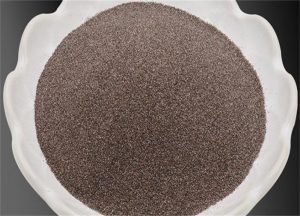

Introduction of calcium hydroxide slurry
01) Production process: calcium carbonate is added to a certain proportion of water reaction → calcium hydroxide slurry.
Note: A temperature of about 70° is generated during the reaction, so the calcium hydroxide slurry can be used for drying;
02) Use of calcium hydroxide slurry: used for SO2 in flue gas generated after de-waste incineration;
Note: When using waste calcination to generate electricity, SO2 gas will be generated in the air when the garbage is incinerated. The calcium hydroxide slurry is directly sprayed in the smoke, which will cause SO2 in the flue gas to react with the calcium hydroxide slurry, produce CaSO3·0.5H2O crystal, thereby purifying the SO2 gas generated by the waste incineration;

Domestic sewage treatment process
Domestic sewage – add flocculant – enter the vibrating screen machine to filter – put into the 200 mesh filter membrane to filter – put into the activated carbon filter bucket to filter – test the water whether compliance, if compliance can be directly discharged into Hanoi;

Lead trioxide (chemical formula PB3 O 4), commonly known as red Dan, lead Dan, relative molecular weight 685.60. National Standard No.: 61507 / CAS No.: 1314-41-6. Mainly used as antirust pigment, organic synthetic oxidant, battery powder making. It is a fresh orange powder or block solid, it is insoluble in water, but soluble in hot lye, rare nitric acid, acetic acid, hydrochloric acid. It is a toxic chemical.

The pigments are a substance that makes an object color. Pigments are soluble and insoluble, with inorganic and organic differences. Inorganic pigments are generally mineral substances. It has long been known that humans use inorganic pigments to paint and smear the body on colored walls using colored soil and ore. Organic pigments are generally obtained from plants and marine animals such as indigo, garcinia, and purple extracted from shellfish in ancient Rome.

After being crushed and pulverized for the first time, the used tires become granular coarse powder. After grinding through a small mill, the powder can be ground to a fineness of 60 mesh and 80 mesh. The coarse-grained rubber powder is well sieved with a linear vibrating sieve, but the fine powder that has been milled by mill is not well sieved because the rubber powder itself is too fine and elastic. If the traditional linear vibrating sieve is easy to block the mesh, the centrifugal sifter has low output and low precision, and the rubber powder sieving machine with large output is not a big problem in the production of rubber powder manufacturers.

Today, with rapid developing of economy, the demand for calcium powder is increasing, but in the calcium powder production system, large particle materials or impurities appear, which affects the quality of the product. This screening problem has become Manufacturers and engineers are the most headaches, they are looking for the best screening equipment.
However, in the past, most of the screening equipment used by manufacturers producing light calcium was mainly scraper screens, air sorters and cyclone mills. These equipments have some drawbacks.

Brown corundum is made of bauxite and coke (anthracite) as the main raw materials, and is smelted at high temperature in an electric arc furnace.